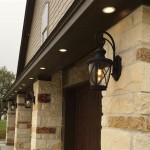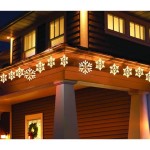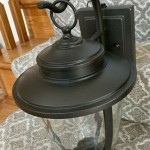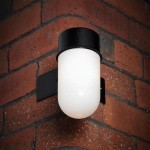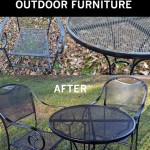What Is The Best Outdoor Over-the-Air TV Antenna?
Cutting the cord and embracing free over-the-air (OTA) television is an increasingly popular way to save money. A critical component of this transition is choosing the right outdoor antenna. This article will explore the various factors influencing antenna selection and highlight some key features to consider.
Antenna Types
Several antenna types cater to different reception needs and environments. Understanding these differences is crucial for optimal performance.
* **Directional Antennas:** These antennas focus their reception in a specific direction, ideal for homes located farther from broadcast towers or in areas with obstructions. * **Multi-directional Antennas:** These antennas receive signals from all directions, making them suitable for urban areas with multiple nearby towers. However, they may be less effective at receiving weaker signals from distant towers. * **Amplified Antennas:** These antennas include a built-in amplifier to boost signal strength, which can be beneficial for long-range reception or areas with weak signals. However, amplification can also amplify noise, so careful selection is essential. * **Attic Antennas:** Although technically not outdoor antennas, attic antennas offer a protected installation option. Their performance can be affected by roofing materials and insulation.
Range
Antenna range is a crucial factor, often expressed in miles. This advertised range should be considered an estimate, as real-world performance can vary based on terrain, obstructions, and other environmental factors.
* **Short-Range Antennas:** Suitable for urban areas close to broadcast towers. * **Medium-Range Antennas:** A balance between range and signal reception, suitable for suburban locations. * **Long-Range Antennas:** Designed for rural areas far from broadcast towers, often requiring amplification.
Frequency Support
OTA broadcasts utilize two main frequency bands: VHF (Very High Frequency) and UHF (Ultra High Frequency). Ensuring the antenna supports the frequencies used by local broadcasters is essential.
* **VHF:** Channels 2-13. These signals typically travel further but are more susceptible to interference from obstacles. * **UHF:** Channels 14-51. These signals generally offer better picture quality but have a shorter range than VHF. * **Combination VHF/UHF:** Most modern antennas support both frequency bands, providing access to a wider range of channels.
Signal Strength and Quality
Various factors influence the quality of the received signal. Understanding these factors helps in choosing an antenna that delivers optimal performance.
* **Distance from Broadcast Towers:** Signal strength weakens with distance. * **Terrain and Obstructions:** Hills, buildings, and trees can block or weaken signals. * **Weather Conditions:** Heavy rain or snow can temporarily affect signal quality. * **Interference:** Other electronic devices can cause interference, impacting signal reception.
Installation and Mounting
Proper installation is crucial for optimal antenna performance. Consider the following aspects:
* **Mounting Location:** Higher locations generally provide better reception. * **Antenna Height:** Raising the antenna above obstructions can significantly improve signal quality. * **Rotator:** A rotator allows for precise antenna positioning to target specific towers, especially beneficial for directional antennas in challenging reception environments. * **Cabling and Connectors:** High-quality cabling and connectors minimize signal loss.
Durability and Weather Resistance
Outdoor antennas are exposed to the elements, necessitating robust construction and weatherproofing.
* **Material Quality:** Look for antennas made from durable materials such as aluminum or stainless steel. * **Weatherproofing:** The antenna should be designed to withstand rain, snow, and wind. * **UV Protection:** Exposure to sunlight can degrade antenna components over time. UV-resistant materials ensure long-lasting performance.
Price and Budget
Antenna prices vary based on features, range, and construction quality. Balancing performance requirements with budget constraints is important.
* **Entry-Level Antennas:** Affordable options for users in close proximity to broadcast towers. * **Mid-Range Antennas:** Offer a balance of performance and affordability. * **High-End Antennas:** Provide maximum range and performance for challenging reception environments.
Additional Features
Some antennas offer additional features that can enhance performance and usability.
* **Built-in Amplifier:** Boosts signal strength for long-range reception. * **4K Ultra HD Support:** Ensures compatibility with high-definition broadcasts. * **Signal Meter:** Assists in optimal antenna positioning. * **Filter:** Reduces interference from other electronic devices.

The Best Outdoor Tv Antennas In 2024 Popular Science

Best Outdoor Tv Antenna 2025 Don T Buy Without Watching This

What Is The Best Place To Put Tv Antenna Digital Outdoor

What Is The Best Tv Antenna For Rural Areas Wireless

The Best Tv Antennas For Rural Areas To Get Live Television Popular Science

Top 10 Best Antenna For Rural Areas In 2024 Expert Reviews Our Choices

The Best Outdoor Digital Tv Antenna In Complete Guide

Best Outdoor Tv Antennas 2025 Top 5

Best Outdoor Digital Tv Aerial For Freeview Review Posh Living

Cutting The Cord Here Are 7 Best Tv Antennas For Rural Homes
